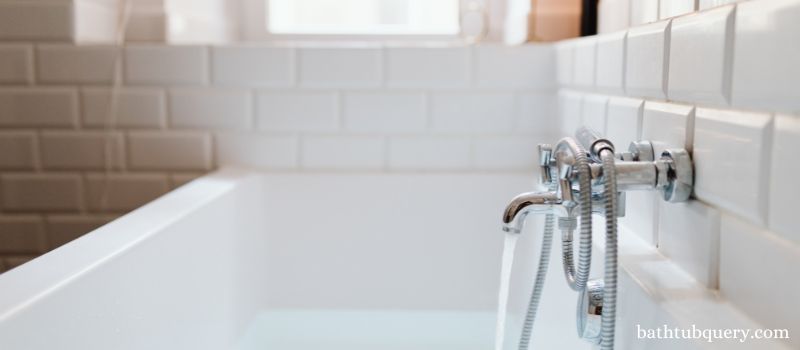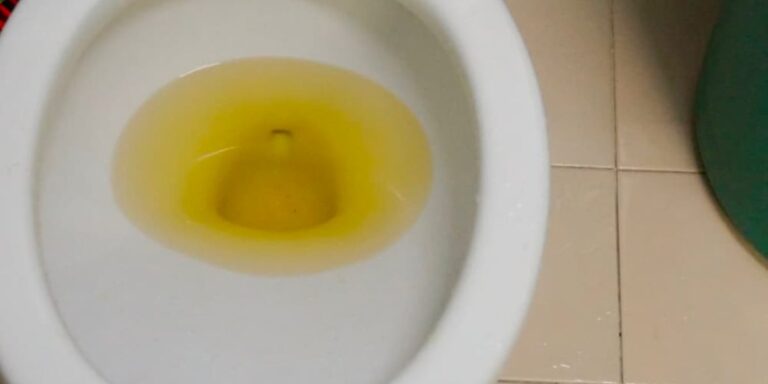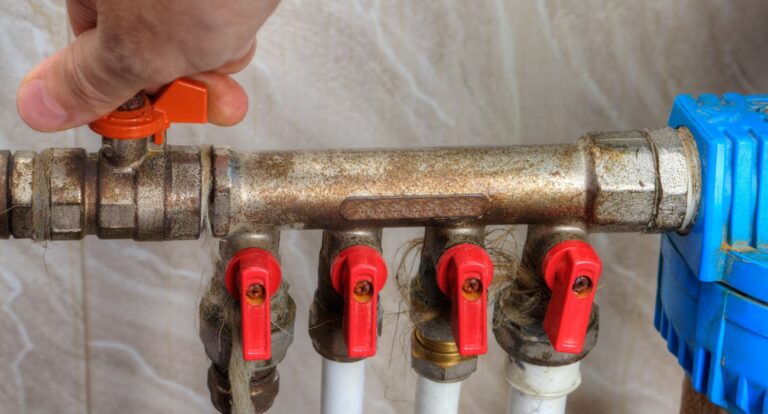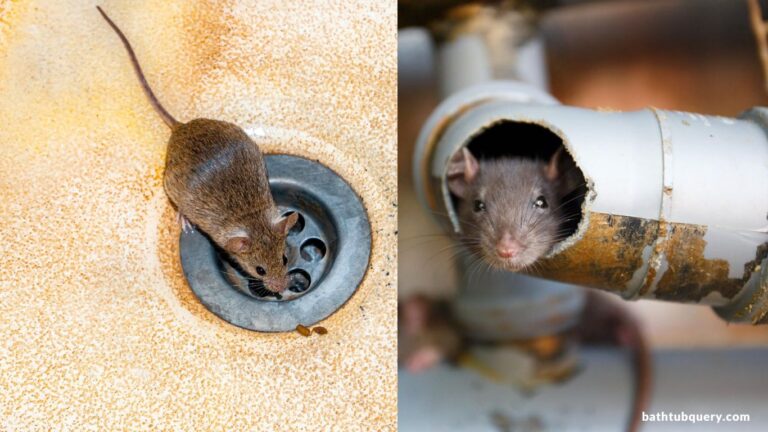My Bathtub Gets Dirty Easily: What To Do? Common Causes!
Have you ever felt frustrated when scrubbing and scrubbing your bathtub, only to find it looking dull and dirty again after just a few uses?
You’re not alone. Many struggle to keep their bathtubs sparkling clean for over a day or two. The key is understanding why your bathtub gets so dirty so quickly, and then using the right cleaning methods and products to get it looking shiny and new again.
So, Why Does Your Bathtub Get Dirty Easily?
Get some white vinegar and fill a spray bottle with it. After showering, spritz the tub and shower walls, let sit briefly, then rinse. The acidic vinegar helps dissolve soap scum, minerals, and grime buildup. It’s an economical, non-toxic cleaner.
Well, Here Are Common Causes of a Dirty Bathtub
There are a few main culprits when it comes to making bathtubs dirty. Here’s an overview of the
- Soap scum buildup – This is probably the number one cause of bathtub dirtyness. Soap scum forms when the minerals in water react with soap and shampoo residues, leaving behind those grayish deposits.
- Hard water stains – Hard water contains high amounts of minerals like calcium and magnesium. As the water evaporates, it leaves behind mineral stains on bathtub surfaces.
- Mold and mildew – A bathtub’s warm, wet environment makes it perfect for mold and mildew growth. This can leave dark stains and a musty smell.
- Body oil and dead skin cells – Our skin is constantly shedding dead cells and producing oils. These get left behind on bathtub surfaces, leading to a grungy buildup over time.
- Hair and other debris – Shed hair and other things that get washed down the drain can be collected in the bathtub and along the drain area.
- Bathtub material – Some materials like plastic and acrylic tend to show soap scum and stains more readily than materials like enameled steel or ceramic.
How Often Should You Clean Your Bathtub?
To keep your bathtub looking fresh and clean, you should wipe it down after every use and do a thorough deep cleaning at least once a week. Here are some general bathtub cleaning frequency guidelines:

After each use:
Do a quick wipe-down using a squeegee or damp cloth after showering or bathing. This helps remove excess water and debris that could lead to buildup.
1-2 times per week:
Deep clean using bathroom cleaners, hot water, and some elbow grease. Target soap scum, stains, and mildew growth.
Monthly:
Disinfect the tub using bleach, hydrogen peroxide, or other antimicrobial cleaners to kill germs and bacteria. Focus on surfaces like faucet handles, too.
Every 6 months:
Scrub the tub well using baking soda or other abrasives to remove stubborn deposits and stains. Re-caulk if needed.
Yearly:
Consider re-enameling or re-glazing the tub if it develops cracks, chips, or etching that cannot be removed.
The more frequently you clean your bathtub, the easier it will be to remove dirt and prevent major buildup issues. Get into a regular habit of quick wipedowns after using the tub and weekly deep cleaning sessions.
Choosing the Best Bathtub Cleaning Products
Using the right type of cleaning products can make scrubbing a dirty bathtub much easier. Look for products that specifically tackle soap scum, hard water stains, mold and mildew, and grime buildup. Here are some of the best options:
All-Purpose Bathroom Cleaners
- Lysol Bathroom Cleaner – Great for soap scum and hard water stains. Clings to surfaces.
- Clorox Tilex Mold and Mildew Remover – Foaming spray designed to kill mold and mildew growth.
- Scrubbing Bubbles Bathroom Cleaner – Cuts through soap scum, body oils, and residue.
- Mr. Clean Magic Eraser – Foam pads that easily wipe away dirt and scum from bathtub surfaces.
Baking Soda
- Baking soda is a gentle abrasive to remove soap scum, stains, and grime from the tub.
- Make a paste by mixing 3 parts baking soda with 1 part water. Scrub onto surfaces and let sit before rinsing.
Vinegar
- The acidic vinegar helps dissolve mineral deposits, soap residue, and hard water stains.
- Use undiluted or mix 1 part vinegar with 1 part water and spray onto the tub.
Hydrogen Peroxide
- The bubbling action of hydrogen peroxide is great for lifting away mold and mildew.
- Spray full-strength onto affected areas and let sit for 10 minutes before rinsing.
Bleach
- Bleach-based cleaners sanitize and disinfect the tub, killing bacteria and germs.
- Look for cleaners that contain 1-3% sodium hypochlorite or calcium hypochlorite.
Commercial Scrubbing Tools
- Scrub brushes, sponges, and scouring pads help provide abrasion to lift away built-up gunk.
- Look for plastic bristle brushes and scourers so they are safe for scrubbing tubs.
Using the right specialized bath cleaners and tools tailored for bathtub surfaces will make cleaning day much more effective and easier. Don’t just rely on mild all-purpose cleaners – use products formulated to cut through soap scum, minerals, mold, and grime.
Bathtub Cleaning Tips and Tricks

Cleaning a bathtub thoroughly doesn’t need to be a dreaded chore. There are lots of tips and tricks to make it faster and easier. Here are some of my go-to bathtub cleaning hacks:
Easy Daily Cleaning Routine
Doing a quick wipedown after each use prevents buildup and takes just a minute:
- Rinse: Give the tub a quick rinse to wash away any visible dirt and hair.
- Spray: Spritz the tub with a daily shower cleaner and let it sit for a few minutes.
- Scrub: Use a damp cloth or sponge to wipe down the walls and basin.
- Rinse: Rinse away any residue with clean water.
- Squeegee: Wipe the tub walls and floor with a squeegee to remove pools of water.
Deep Cleaning Methods
For weekly deep cleaning, try these techniques:
- Magic eraser: Use Mr. Clean Magic Erasers to scrub away soap scum and grime easily.
- Baking soda scrub: Make a paste with baking soda and water and scrub with a stiff brush. Let sit before rinsing.
- Vinegar spray: Spray vinegar and let it fizz for 5 minutes, then scrub and rinse. It cuts through scum.
- Toilet brush: Use a toilet bowl brush to scrub the tub bottom and hard-to-reach corners.
Remove Stubborn Stains
For really stubborn bathtub stains and mineral buildup:
- CLR cleaner: Spray on CLR Calcium, Lime, Rust Remover, and let sit to dissolve mineral deposits.
- Dryer sheets: Rub a dryer sheet on stained areas to help wipe away rust and hard water stains.
- Pumice stone: Gently scrub stains with a pumice stone to abrade them away. Rinse thoroughly after scrubbing.
- WD-40: Spray some WD-40 onto stained areas, let sit for 15 minutes, then wipe clean with a damp cloth.
See also, How to Clean a Dirty Bathtub Without Scrubbing? Step-by-Step Cleaning Process
Shower Curtain Tips
- Use a shower curtain liner inside your main curtain to protect it from mildew.
- Washcloth shower liners frequently to prevent the buildup of soap and grime.
- Consider switching to a mildew-resistant vinyl liner for low maintenance.
- Spray down cloth liners with a 50/50 vinegar and water solution to kill mold and mildew.
Grout Cleaning
- Use an old toothbrush and baking soda paste to scrub grout.
- Spray down grout with full strength hydrogen peroxide, let bubble for 10 minutes, then scrub.
- For totally discolored grout, consider using a grout pen to paint over stained areas.
You can tackle even the grimiest bathtub by using the right techniques and cleaning tools. Mixing up your methods and using cleaners made for bath surfaces is key.
Preventing Dirty Bathtub Buildup

Prevention is the best medicine when it comes to bathtub cleaning. Here are some tips to prevent your tub from getting dirty and stained in the first place:
Limit Soap Scum Buildup
- Rinse soap and shampoo from walls after bathing – don’t let it sit.
- Use a silicone squeegee right after showering to eliminate pooling water.
- Wipe down walls with rubbing alcohol weekly to prevent residue.
- Use liquid bath soaps instead of bar soap, which causes more scum.
Reduce Mold and Mildew Growth
- Always turn on the bath fan during and after showering to cut the humidity.
- Keep your bathroom properly ventilated.
- Spray the tub with vinegar after use to prevent mold/mildew growth.
- Thoroughly rinse curtains and wash or replace them monthly.
Prevent Mineral Deposits
- After rinsing, wipe standing water and spots from the tub.
- Dry the tub fully with a squeegee or towel after each use.
- Consider installing a water softener system to reduce mineral content.
- Apply a tub sealer annually to prevent buildup of minerals and salts.
Limit Grime and Oils
- Hang a mesh hair trap over your tub drain to catch loose hairs.
- Apply a hydrophobic coating like Rain-X to tub walls to prevent water spots.
- Use bath mats or towels outside the tub to limit dirt being tracked in.
- Clean the tub fully after use by multiple people, like kids, to remove body oils.
An ounce of prevention is truly worth a pound of cure when it comes to bathtub cleaning. Just taking a few minor steps can drastically reduce ongoing dirt and stain issues.
Still, Don’t Know What To Do, Then Call For Professional Help
While regular cleaning will take care of most basic bathtub dirt, sometimes professional help is needed for more heavy-duty bathtub cleaning challenges:
Replacing re-caulking:
If the caulk seal around your tub is growing mold or mildew, or is cracked and peeling away, it likely needs to be replaced by a skilled professional. Proper caulking prevents leaks and moisture damage.
Rust stains:
Call for professional assistance for tough rust stains that require potent acid-based cleaners to remove. Rust can permanently damage the tub surface.
Reglazing:
If the original enamel finish is worn down or damaged, a pro can reglaze the tub with a fresh layer of enamel coating. This makes it look new again.
See also, How to Remove Rust from Your Enamel Tub? The Ultimate Guide
Antimicrobial treatments:
For recurring mold/mildew issues, some pros offer antimicrobial treatments for tubs that inhibit future growth. This is more effective than DIY mold removal.
Jetted tub cleaning:
Jetted tubs require special cleaning of the jets and plumbing with antibacterial solutions. Professionals have the training and products to disinfect a jetted tub fully.
While regular cleaning can tackle most dirt issues, professionals have the expertise and tools to fully restore a severely dirty, damaged, or mold-infested bathtub. Don’t hesitate to call them in when needed.
In Closing
As you can see, there are many potential causes of a chronically dirty bathtub, from soap scum to hard water stains. The key is cleaning frequently using the right products and techniques tailored to bath surfaces. Make wiping the tub part of your post-shower or bath routine. Deep clean at least weekly to remove built-up gunk and grime. And take steps to prevent dirt and buildup in the first place.
Some elbow grease and the right cleaning methods can get your tub sparkling again. But if you’re battling rust stains, recurring mold, or a damaged finish, don’t be afraid to call in professional bathtub cleaning services. They have industrial-strength cleaners and tools that can fully renew a severely dirty tub.
You can get your bathtub back to a pristine shine with diligent scrubbing. No more fighting daily grime or stains! Just be sure to stay on top of your tub cleaning routine. A little effort goes a long way to prevent your bathtub from becoming a dirt magnet.

William J. Bullock is a licensed plumber with over 15 years of experience installing and repairing bathtubs. He runs his own plumbing company in Greenville and serves residential and commercial clients. William is dedicated to providing honest, transparent advice to help homeowners make informed decisions about their bathroom renovations.
He has established expertise in selecting bathtubs, planning custom installations, diagnosing issues, and completing repairs. William aims to share practical tips and reliable recommendations based on extensive hands-on work. When he isn’t on a job site, William enjoys spending time with his family and volunteering at local community events. He takes pride in delivering quality service and enjoys helping people upgrade their homes.







